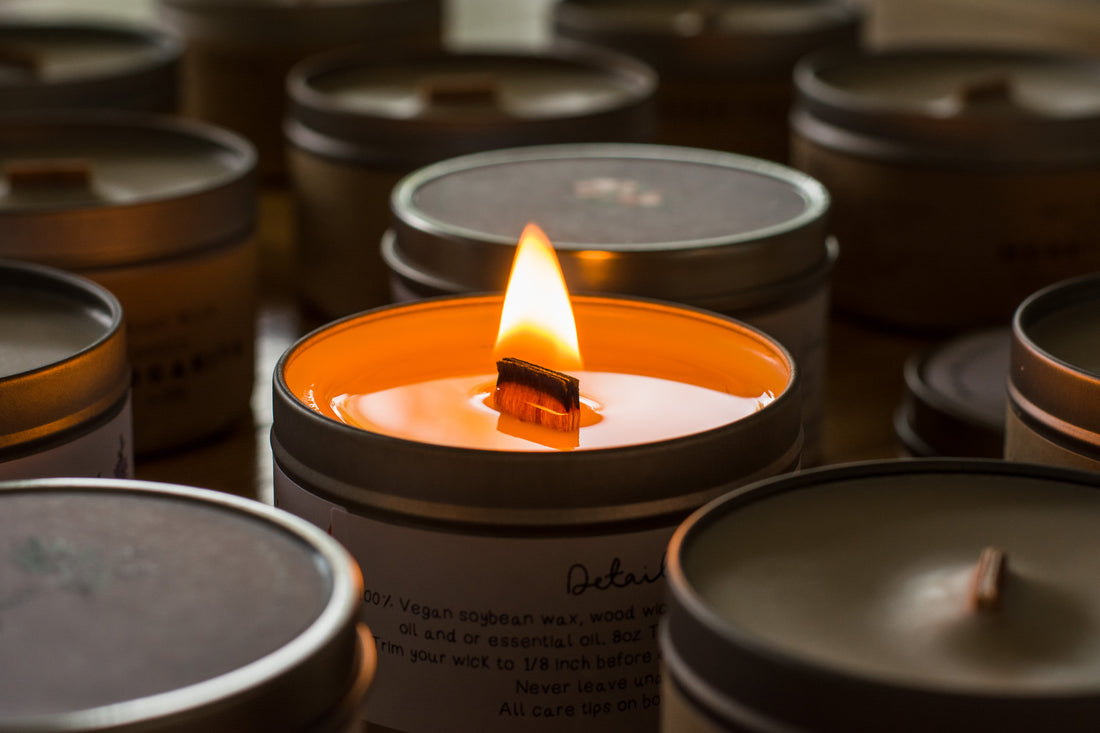Humans have been burning candles for thousands of years. Their primary use was as a light source, but over time they gained cultural and religious significance across the world. Before candles, mainly oil lamps were used for light, but they had a tendency to spill and the wick needed to be pulled up by hand as it burned. Candles created a longstanding light source that required limited human attention to maintain.
The Romans are credited with making the first true candles, dating back to about 500 BC. They used rolled papyrus dipped in tallow (animal fat). Tarrow candles burned extremely dirty, emitting dark smoke and an unpleasant smell. Despite this, they became very common, and tallow candle making was a guild craft in 13th century France and England. The candlemakers (chandlers) would travel from home to home making candles out of the fats saved by the household.
During the middle ages, beeswax was discovered. As a clean-burning wax with a pleasant scent, it was greatly preferred to tallow. However, beeswax candles were expensive and typically only burned in churches and by the wealthy. Spermaceti, a wax derived from sperm whale oil, was also discovered in the middle ages. Like beeswax, it was clean burning and scentless. Spermaceti candles burn bright and smokeless, and were quite popular for a period of time. However, as replacements for whale commodities were found, whaling decreased and thus did the production of spermaceti candles.
The next big discovery in the history of candles was the invention of paraffin wax. Paraffin wax, a petroleum product, was first manufactured in Germany in 1830. Scentless and clean-burning it quickly took over candle making and became the standard. However, the demand for candles took a sharp downward turn after the introduction of the lightbulb in 1879.
Scented Candles
Paraffin wax candles were popular throughout the 20th century, but demand for candles as a decorative accessory hit a surge in the 1980s. Candles started to become available in a variety of sizes, shapes, and colours. This interest in candles continued to grow throughout the 1990s, especially for scented and natural wax candles. This demand led to the creation of soy wax, now one of the most popular types of candle wax. It is cheaper than beeswax and is longer burning with a better scent throw than paraffin wax.
One of the most well known candle companies, Bath & Body Works was established in 1990. They are famous for their oversized three-wick candles with hundreds of scents. All of their stores hold a massive sale the first Saturday of December and it is now known as ‘Bath & Body Works Candle Day’. The passion for Bath & Body Works scented candles runs so deep that one woman even posted an 11-minute long rant when she was unable to get her hands on her favourite scent.
Religious and Cultural Importance of Candles
Many religions utilize candles in ceremonies and traditions. The Jewish Holiday, Hanukkah, centers around the lighting of candles on the menorah. The holiday is also known as the festival of lights.
Catholics place candles before statues of Saints and other religious figures, often lighting the candles in memoriam of the deceased. It is used as a symbol of the light of Christ or God. Candles are also used to mark the passage of advent with four candles in a wreath. The four candles represent; peace, love, hope, and joy. One candle is lit each week of advent.
Candles are also used in the celebration of Kwanzaa, an African-American celebration held from December 26 - January 1. A candle is lit each day and placed in a holder called a kinara. Kwanzaa is based on seven principles: unity, self-determination, collective work and responsibility, cooperative economics, purpose, creativity, and faith. Each candle represents one of these principles.
These are just a few examples of how candles are used to celebrate and honour tradition. The nature of a candle, a small flickering light source easily lit and extinguished, lends itself so easily to symbolism it is no surprise most cultures utilize it in some way.
Candles Today
Candles are still widely used today, and can be found in almost any colour, shape, size, scent, or container you can think of. Like many products that became commercialized in the 20th century, there is now a movement to return to simplicity and hand poured candles are becoming preferred amongst consumers.
There is simply no denying the comfort lighting a candle can bring to a space. The consistent use of candles across centuries even after the invention of more convenient light sources demonstrates their influence. The discovery of fire is arguably the most pivotal human innovation ever, no longer did people have to spend half of their living hours in the dark. Perhaps we hold onto an instinctual fondness of fire that candles recall in our subconscious.

